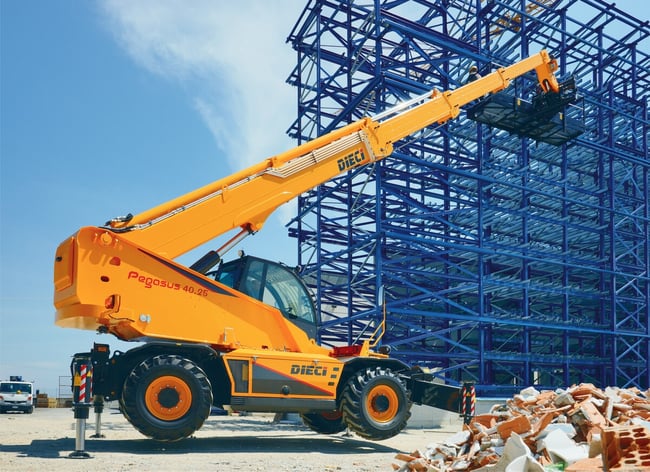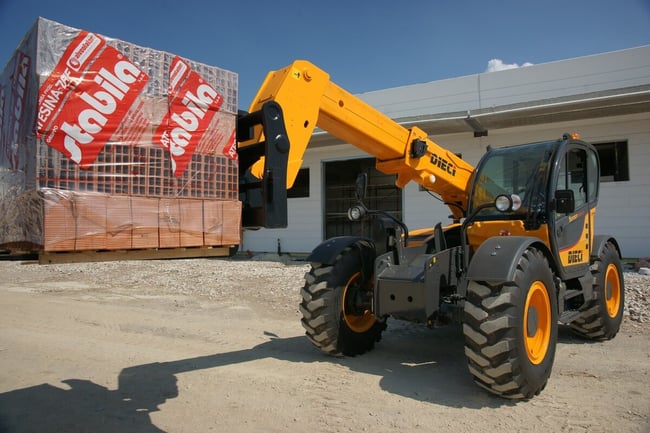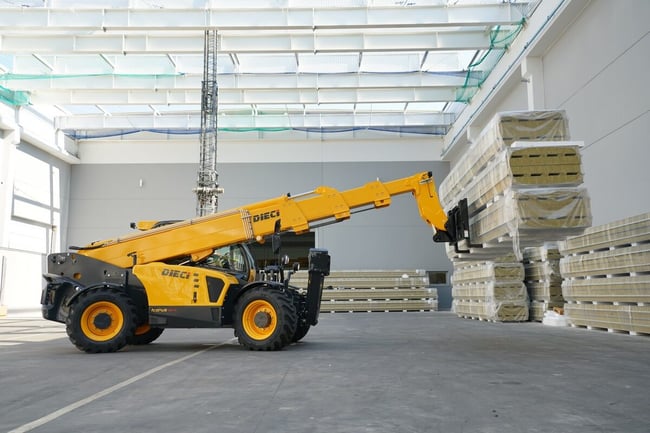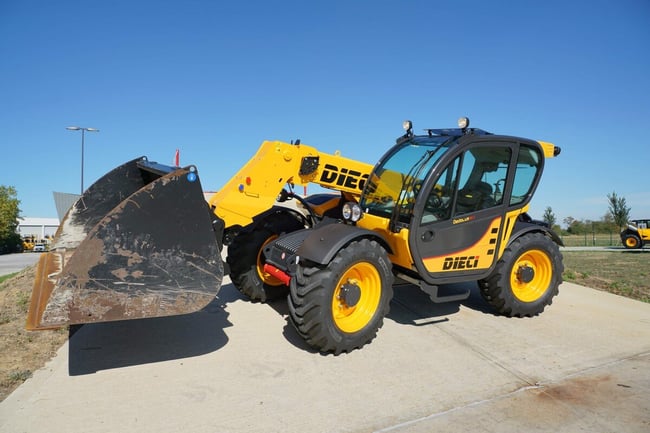Increasingly, the byword for safety and versatility in construction is the telehandler, a four-wheeled vehicle with a telescopic boom capable of supporting a wide range of attachments. Telehandlers are the Swiss army knife of construction machinery – the right attachment turns the one machine into the one you need for the job at hand.
Modern construction sites are a far cry from those of even 20 years ago. You won’t find any ladders being used for a start, with even a single-level building project being swathed in scaffolding to meet health and safety requirements.
Labour supply is tight, and so are the budgets and timeframes. It is essential to have the right team on the right tools.
“The right tools” now means nail guns instead of hammers and elevated working platforms instead of ladders. Equipment needs to perform and be safe to use whatever the weather. And vehicles need to be versatile, in order to save on capital and operational costs by running as few as possible. This is where telehandlers are the perfect fit.
Not all telehandlers are the same. The basic model for construction and agriculture is the standard fixed-boom telehandler. Next up is the rotational telehandler. These rotate around the chassis, meaning that the vehicle can be stationary on its outriggers, significantly increasing flexibility and accessibility. At the top of the pile is the heavy-lift telehandler, which has proved popular with the mining industry in particular.
The only limit to a telehandler’s versatility is the availability of a suitable attachment, and there is a long list of these, including elevated work platform (EWP), winch, hook, jib crane, bucket and forks. Switching from one attachment to another is quick and easy. Some machines come equipped with hydraulic functions that allow attachments to be hooked up with a touch of a button. Swapping from an EWP to a winch or forks shouldn’t take more than a few seconds. Alternatively, removal of a single pin enables such a switch.

Putting in a drainage is easy and fast using a Drainage Telehandler.
The Dieci Samson 75.10 Telehandler working on an irrigation project in the South Island, New Zealand.
Loading a fertiliser aircraft above Lake Wakatipu
The versatility of a telehandler is a huge benefit, bringing the time and cost savings they bring to a construction site. They have the functionality of a forklift and the reach and strength of a crane – with many models having a reach of up to 30m and a lifting capacity of up to 21 tonnes.
Because they are so compact and versatile, telehandlers are capable of taking over the role of forklifts, cranes and scaffolding, allowing savings on plant expenses. They also allow work to be done more efficiently, saving time and therefore money, especially if using one means avoiding penalty payments for time over-runs. Rental options further expand their cost-saving capabilities.


Attaching a lifting winch turns a telehandler into a mobile crane, which means you don’t have to wait for a hire crane to show up, or to pay the hefty hire fee. Some telehandlers have a rotating upper section, and look and work in a similar way to cab-down rough-terrain cranes.
Telehandlers are highly mobile and can be driven to most sites and locations. They are adept at navigating a range of working environments as they offer three different steering modes – front wheel, four wheel and crab steering. Models with 4-wheel-drive can cover the rough and uneven terrain common on building sites.
One of the strongest arguments for using a telehandler on a construction site is health and safety. A key part of the push for safer workplaces in New Zealand is to use the right gear for the job. As an employer, a construction contractor’s legal responsibility to supply staff with the right gear means there is significant financial and reputational risk in failing to do so. A telehandler fitted with the appropriate attachment will satisfy those legal requirements and show staff that you take safety seriously. With each attachment comes the peace of mind that this is a proven product available “off the shelf”, rather than an untested one-off product from the local engineering workshop.
To ensure the highest level of on-site safety, telehandlers must only be used by properly trained, qualified operators. Planning and preparation for using the telehandler on site can also increase safety; in particular, it is important that there is a clear, pre-determined travel path for the machine to guide its operation.


Other considerations include not exceeding the maximum load capacity within each respective load, using stabilisers or outriggers if needed, and travelling with the boom and load in the lowest possible position.
Load sensors will tell an operator when they are nearing the machine’s safe working limits, and if those limits are exceeded the telehandler will automatically shut down.
An important thing to remember when operating a telehandler is to lift the load before extending the boom. The operator should move the work tool into a load and secure it with the boom fully retracted, then lift and extend the boom. This will ensure loads are within safe working limits.
Telehandlers come with roll-over protection (ROPS) and falling-object protection (FOPS) as standard, and their typically low-mounted boom gives the operator full 360-degree visibility.
© 2025 Webbline Agriculture Ltd. All rights reserved.